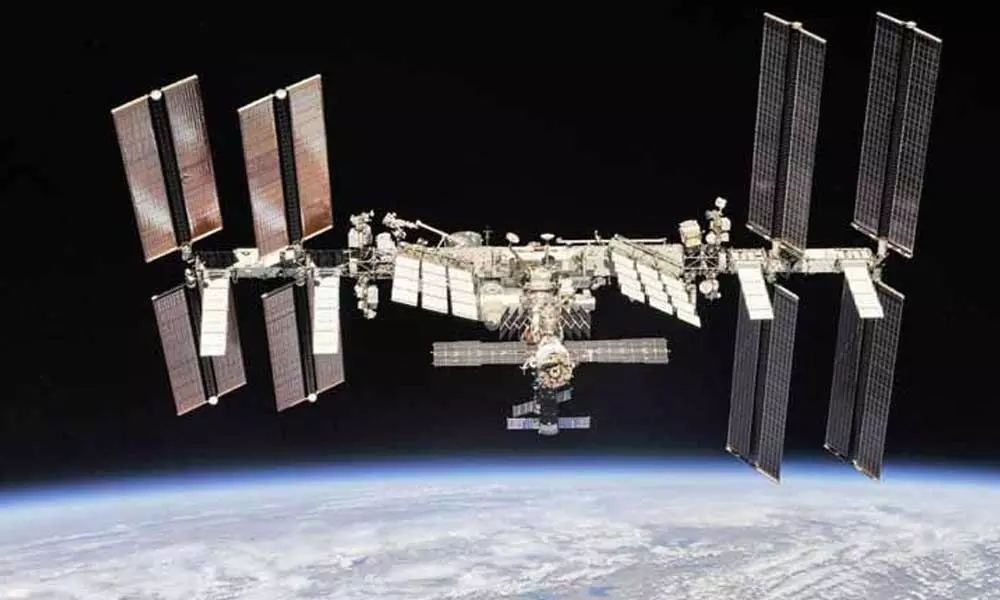Live
- India Faces Blow as Pacer Mohammed Shami Ruled Out for Remainder of Australia Series
- Biden Pardon: Joe Biden Commutes Death Sentences of 37 Inmates, Including Child Killers and Mass Murderers
- South Korea: Yoon believes impeachment trial takes priority over martial law probe
- Strict Action for Non-Adherence to Time Management - DMHO Dr. Swarajya Lakshmi
- Over 13.29 lakh houses approved for rural poor in Maharashtra: Shivraj Chouhan
- District Collector Urges Timely Completion of Indiramma Housing Scheme Survey
- Digital Arrest Scam: Hyderabad Man Duped of ₹7 Lakhs by Fake Crime Branch Police Callers
- Sukhbir Badal seeks President's Police medal for officer who saved his life
- US Firm Accordion Acquires Merilytics, Launches 1,500-Seater Office in Hyderabad
- Free Medical Camp Organized by Alampur Advocate Bar Association
Just In
ISRO's Upcoming Plans: 8 Big space missions lined up in future


Take a look at the missions that the space agency ISRO has lined up in the coming years.
1) 2019-2020, Aditya-1 - Reaching for the Sun
Aditya-I is India's first committed scientific mission to study the Sun. A 400 kg class space telescope will be inserted into a halo orbit 1.5 million km from the Earth to learn about the three layers of the sun. These three layers are - photosphere, chromosphere and corona, the outer atmosphere of the star in our solar system. The mission is aimed to understand the weather in space and to know why the outer atmosphere of the Sun is 200 times hotter than the solar disc. The satellite Aditya-1 is expected to be launched by 2020.
2) 2024, Mangalyaan-2 - Back to Mars
With Mangalyaan-2 the space agency plans to return to the red planet. The success of Mangalyaan has encouraged ISRO to send a second probe by 2024, which study the Earth's neighbour more profoundly and understand well the evolution of Mars.
3) 2025, Astrosat-2 - Origins of the Universe
India is planning to send a second observatory in space, followed by mission of Astrosat-1 — India's first dedicated multi-wavelength space telescope — to know about the origin of the universe and discover new planets. ISRO is finalising a plan for the mission.
4) 2013, Mission Venus - Befriending a solar sibling
ISRO is planning a mission to Venus the Earth's "twin sister". The Earth and Venus are similar in many areas like in size, mass, density, bulk composition and gravity. The space agency will send a spacecraft around 400 km over Venus to conduct research and know its formation, atmosphere and its interaction with the solar wind. This Venus mission is expected by 2023.
5) 2023, Moon Mission- Drilling with Japan
ISRO and Japan Aerospace Exploration Agency are planning to send a joint mission to the Moon's south pole. The mission includes landing a rover that will drill the Moon's surface to conduct scientific experiments. To explore the existence of water will be the main focus. Japan is likely to provide the rocket and a lunar rover; India is expected to contribute with a lander for the mission, a follow-up of Chandrayaan-2. This mission is aimed at exploring the suitability of the region for establishing a sustainable lunar base.
6) 2021, Gaganyaan - Manned space mission
Three Indian astronauts are expected to fly to space in the country's first human space flight mission in 2021, nearly four decades after Rakesh Sharma made his journey on a Russian rocket in 1984. This time, the Russians are helping India make the spacesuits and train its astronauts to live in a space capsule for the week-long mission. A Geosynchronous Satellite Launch Vehicle Mk-3, an upgraded version of the rocket that sent the Chandrayaan-2 mission to the Moon, will fly the astronauts — fighter pilots selected from the Indian Air Force — to space.
7) 2025, Space Station - Staying up there
Within ten years, India wants to have a space station up there. The station will help astronauts to stay longer in space and conduct experiments. India intends to launch the space station by 2025 around the time the International Space Station is decommissioned around 2028. China also has a plan of a large space station in the lower Earth orbit.
8. 2021, X-Ray Polarimeter Satellite - Gazing at celestial bodies
This satellite will measure the degree and direction of X-ray photons from at least 50 potential celestial sources. The satellite will have instruments fabricated by the Raman Research Institute. These will collect data to help us understand the composition, temperature and density of distant celestial devices. This satellite will be launched in the circular lower Earth orbit, around 500-700 km above Earth.

© 2024 Hyderabad Media House Limited/The Hans India. All rights reserved. Powered by hocalwire.com






